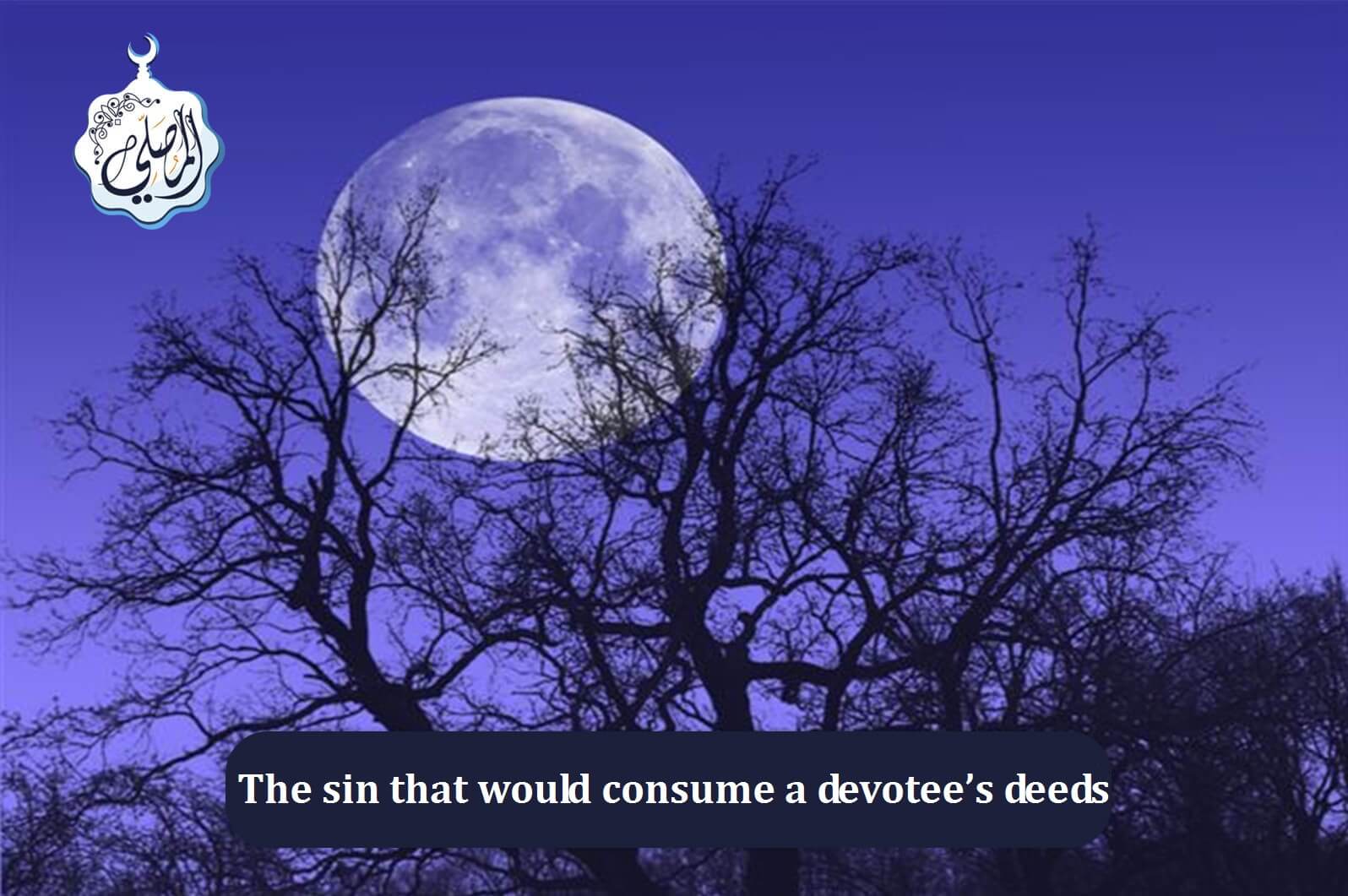
Prayer is the servant's connection with their Lord. It is the pillar of Islam and its greatest pillar after the two testimonies of faith. It is the measure of faith, an indicator of the servant's sincerity, and the final advice of the Seal of the Prophets. The beautiful question is: How do I pray, not just when do I pray.
For prayer is the first thing for which the servant will be held accountable on the Day of Resurrection. If it is sound, the rest of his deeds will be sound. If it is corrupt, the rest of his deeds will be corrupt. When you ask yourself: "How do I truly pray?", you have opened the door to guidance.
The Messenger of Allah ﷺ said: «The head of the matter is Islam, its pillar is prayer, and the peak of its hump is Jihad in the way of Allah.» [Authentic, Jami` at-Tirmidhi (2616), Ibn Majah (3973)]
Given that prayer holds this immense status, it is incumbent upon every Muslim to learn the description of the Prophet's ﷺ prayer and to ask, "How do I pray as the Prophet ﷺ prayed?" in order to perform it as commanded by Allah and His Messenger, fulfilling the saying of the Prophet ﷺ: «Pray as you have seen me praying.» [Sahih al-Bukhari (631)]
In this beneficial article, we present the description of the Prophet's ﷺ prayer as it has been reported, step by step, with its legal evidence. So, let us teach the generations: How do I pray as the Prophet ﷺ prayed?
The Description of the Prophet's ﷺ Prayer: Facing the Qiblah and Standing
The worshipper faces the Qiblah, which is the honorable Ka'bah, in compliance with Allah's command: "So turn your face toward al-Masjid al-Haram. And wherever you [believers] are, turn your faces toward it." [Al-Baqarah: 144]
The worshipper stands upright, facing the Qiblah.
It is obligatory to pray standing, and this is a pillar, except for:
The one praying the prayer of fear; it is permissible for him to pray while riding.
The sick person who is unable to stand; he prays sitting if he is able, otherwise on his side.
The one praying a voluntary prayer; he may pray while riding or sitting if he wishes, and he bows and prostrates by making gestures with his head.
Similarly for the sick person, and he makes his prostration lower than his bowing. [Summary of the Description of the Prophet's Prayer (p.8)]
Intention (Niyyah)
Teach everyone who asks "How do I pray?" that prayer is an act of worship that is not accepted without an intention.
The place of the intention is the heart. There is no need to utter it verbally. The worshipper must intend the prayer he is about to perform and specify it in his heart, such as the obligatory Zuhr prayer or `Asr, or their Sunnah prayers, for example. [Summary of the Description of the Prophet's Prayer (p.13)]
The Opening Takbir (Takbirat al-Ihram) - A Pillar Without Which the Prayer is Invalid
From the description of the Prophet's ﷺ prayer, he would raise his hands, stretched out, opposite his shoulders or until they reached the lobes of his ears. As for touching the ears with his thumbs, this has no basis in the Sunnah.
He would say: "Allahu Akbar" (Allah is the Greatest), raising his hands with his fingers stretched out, neither separating them widely nor clasping them together. He would not raise his voice with the Takbir in all prayers, unless he was an Imam.
It is permissible for the Mu'adhin to convey the Imam's Takbir to the people if there is a reason for it, such as the Imam's illness, his weak voice, or a large number of worshippers behind him. The follower should only say the Takbir immediately after the Imam has finished his. [Summary of the Description of the Prophet's Prayer (p.14)]
In the description of the Prophet's ﷺ prayer, he would raise his hands in four places:
At the opening Takbir.
When bowing (Ruku').
When rising from bowing.
When standing up from the first Tashahhud.
Abdullah binUmar bin Al-Khattab reported: "The Messenger of Allah ﷺ used to raise his hands opposite his shoulders when he started the prayer, when he said the Takbir for bowing, and when he raised his head from bowing he would also raise them similarly and say: 'Sami`a Allahu liman hamidah, Rabbana wa lakal-hamd' (Allah hears those who praise Him. Our Lord, to You is all praise). He would not do that during prostration." [Sahih al-Bukhari (735) and the wording is his, Sahih Muslim (391)]
Malik bin Al-Huwairith reported: "The Messenger of Allah ﷺ, when he said the Takbir, would raise his hands until they were opposite his ears. When he bowed, he would raise his hands until they were opposite his ears. When he raised his head from bowing and said, 'Sami`a Allahu liman hamidah', he would do the same." [Sahih Muslim (391)]
Nafireported: "When IbnUmar entered the prayer, he would say the Takbir and raise his hands. When he bowed, he would raise his hands. When he said, **'Samia Allahu liman hamidah'**, he would raise his hands. When he stood up after two Rak'at, he would raise his hands. IbnUmar attributed that to the Prophet of Allah ﷺ." [Sahih al-Bukhari (739)]
Placing the Hands After the Opening Takbir
He would place his right hand over his left hand on his chest, as in the description of the Prophet's ﷺ prayer.
Sahl bin Sa`d said: "The people were commanded that a man should place his right hand on his left forearm in the prayer." [Sahih al-Bukhari (740)]
He would place the right hand on the back of the left hand, on the wrist and the forearm. Sometimes he would grasp his left hand with his right. [Summary of the Description of the Prophet's Prayer (p.15)]
The Description of the Prophet's ﷺ Prayer Regarding His Gaze While Standing
While standing, he would look at the place of his prostration. He would not turn to the right or left, for turning is a snatching that Satan snatches from the prayer of a servant. It is not permissible to raise one's gaze to the sky. [Summary of the Description of the Prophet's Prayer (p.16)]
The Description of the Prophet's ﷺ Prayer in the Opening Supplication (Du'a al-Istiftah) After the Opening Takbir
It is recommended to open the recitation with some of the reported opening supplications from the description of the Prophet's ﷺ prayer. They are many, the most famous of which are:
Abu Hurairah reported: "When the Messenger of Allah ﷺ said the Takbir in the prayer, he would remain silent for a short while before reciting. I said, 'O Messenger of Allah, may my father and mother be sacrificed for you, what do you say during your silence between the Takbir and the recitation?' He said: 'I say: "O Allah, distance me from my sins as You have distanced the East from the West. O Allah, purify me from my sins as a white garment is purified from filth. O Allah, wash away my sins with snow, water, and hail."'" [Sahih al-Bukhari (744), Sahih Muslim (598)]
A'ishah said: "When the Prophet ﷺ started the prayer, he would say: **'Subhanak Allahumma wa bi hamdika, wa tabarakas-muka, wa ta'ala jadduka, wa la ilaha ghairuk'** (Glory be to You, O Allah, and praise; blessed is Your Name and exalted is Your majesty; there is no god but You)." [Authentic, Sunan Abi Dawud (775), Jami at-Tirmidhi (242, 243)]
Anas reported: "A man came and entered the row (in prayer) while breathing heavily. He said: 'Alhamdulillahi hamdan kathiran tayyiban mubarakan fih' (All praise is to Allah, much, pure, blessed praise). When the Messenger of Allah ﷺ finished his prayer, he said, 'Which of you spoke the words?' The people remained silent. He said, 'Which of you said it? For he has not said anything wrong.' A man said, 'I came while I was breathing heavily, so I said it.' He said, 'I saw twelve angels racing to take it up to (Allah).'" [Sahih Muslim (600)]
Ibn Umar said: "While we were praying with the Messenger of Allah ﷺ, a man among the people said: **'Allahu Akbaru kabira, wal-hamdu lillahi kathira, wa subhan Allahi bukratan wa asila'** (Allah is the Greatest, much greatness. All praise is to Allah, much praise. Glory be to Allah, in the morning and the evening). The Messenger of Allah ﷺ said, 'Who said such and such words?' A man from the people said, 'I did, O Messenger of Allah.' He said, 'I was amazed by them; the gates of heaven were opened for them.' IbnUmar said, 'I have not abandoned them since I heard the Messenger of Allah ﷺ say that.'" [Sahih Muslim (601)]
The Description of the Prophet's ﷺ Prayer in the Remembrance After the Opening Supplication
Seeking refuge with Allah from Satan, the accursed. It has three forms:
'A'udhu billahi min ash-shaytan ir-rajim' (I seek refuge with Allah from Satan, the accursed).
'A'udhu billahi min ash-shaytan ir-rajim, min nafkhihi wa hamzihi wa nafthih' (I seek refuge with Allah from Satan, the accursed, from his arrogance, his poetry, and his madness). [Authentic, Sahih Ibn Hibban (6598)]
**'A'udhu billahi as-samii al-'alim min ash-shaytan ir-rajim, min hamzihi wa nafkhihi wa nafthih'** (I seek refuge with Allah, the All-Hearing, the All-Knowing, from Satan, the accursed, from his arrogance, his poetry, and his madness). [Authentic, Sunan Abi Dawud (775), Jami at-Tirmidhi (242)]
The Description of the Prophet's ﷺ Prayer in Reciting Al-Fatihah
To learn "how do I pray?", I say quietly in both loud and silent prayers: 'Bismillah ir-Rahman ir-Rahim' (In the name of Allah, the Most Gracious, the Most Merciful).
The Imam, the follower, and the person praying alone recite Surah Al-Fatihah in every Rak'ah, for it is a pillar without which the prayer is invalid. Then, after it, one recites whatever is easy from the Qur'an.
`Ubadah bin As-Samit reported that the Messenger of Allah ﷺ said: «There is no prayer for whoever does not recite the Opening of the Book (Al-Fatihah).» [Sahih al-Bukhari (756), Sahih Muslim (394)]
He would recite Al-Fatihah, pausing at the end of each verse: "Bismillah ir-Rahman ir-Rahim" then pause, then say "Al-hamdu lillahi Rabb il-'alamin" then pause, then say "Ar-Rahman ir-Rahim" then pause, then say "Maliki yawm id-din" and so on until the end of the Surah. This was the way of the Prophet's ﷺ entire recitation; he would pause at the end of each verse and not join it with the next, even if its meaning was connected to it.
Whoever is unable (to recite Al-Fatihah), it suffices him to say: "Subhan Allah, wal-hamdu lillah, wa la ilaha illa Allah, wa Allahu Akbar, wa la hawla wa la quwwata illa billah" (Glory be to Allah, all praise is to Allah, there is no god but Allah, Allah is the Greatest, and there is no power nor strength except with Allah).
The Description of the Prophet's ﷺ Prayer in Recitation After Al-Fatihah
To learn "how do I pray?", it is recommended to recite another Surah after Al-Fatihah, even in the funeral prayer, or some verses in the first two Rak'at.
It is Sunnah to make the recitation longer in the first Rak'ah than in the second.
And to make the recitation in the last two Rak'at shorter than the first two, about half. [Summary of the Description of the Prophet's Prayer (p.19)]
The Description of the Prophet's ﷺ Prayer in Reciting Loudly and Quietly
How do I pray? I recite loudly in the Fajr prayer, Friday prayer, the two Eid prayers, the prayer for rain (Istisqa'), the eclipse prayer, and the first two Rak'at of Maghrib and Isha'. I recite quietly in the Zuhr andAsr prayers, in the third Rak'ah of Maghrib, and the last two Rak'at of `Isha'.
It is permissible for the Imam to let them hear an verse sometimes in the silent prayer.
As for Witr and the night prayer, one may recite quietly sometimes and loudly sometimes, and moderate in raising the voice. [Summary of the Description of the Prophet's Prayer (p.20)]
The Description of the Prophet's ﷺ Prayer in Bowing (Ruku')
When he finished the recitation, he would pause for a short while.
Then he would raise his hands, saying the Takbir, to bow. He would place his hands on his knees, with his fingers separated, keeping his upper arms away from his sides. He would level his back with his head, neither curving it nor lowering his head nor raising it, but making it level with his back.
`A'ishah said: "The Messenger of Allah ﷺ would start the prayer with the Takbir and the recitation with 'Al-hamdu lillahi Rabb il-'alamin'. When he bowed, he would neither raise his head nor lower it, but it was between that. When he raised his head from bowing, he would not prostrate until he was standing upright. When he raised his head from prostration, he would not prostrate again until he was sitting upright. He would say the Tashahhud in every two Rak'at. He would lay his left foot flat and keep his right foot upright. He would forbid the 'sitting of Satan' (squatting), and he would forbid a man to spread his forearms (on the ground) like a wild beast. He would conclude the prayer with the Taslim." [Sahih Muslim (498)]
In his bowing, he would say: "Subhana Rabbi al-'Azim" (Glory be to my Lord, the Almighty) three times or more.
`A'ishah (may Allah be pleased with her) said: "The Prophet ﷺ used to say in his bowing and prostration: 'Subhanaka Allahumma Rabbana wa bi hamdika, Allahumma ghfir li' (Glory be to You, O Allah, our Lord, and praise; O Allah, forgive me)." [Sahih al-Bukhari (4293)]
`A'ishah said: "He used to say in his bowing and prostration: 'Subbuhun, Quddusun, Rabb ul-mala'ikati war-ruh' (Perfect, Holy, Lord of the angels and the Spirit)." [Sahih Muslim (487)]
And he ﷺ said: «As for bowing, then glorify the Lord, the Mighty and Majestic, in it. As for prostration, then strive in supplication, for it is more deserving of a response for you.» [Sahih Muslim (479)]
The Description of the Prophet's ﷺ Prayer in Rising from Bowing
Then he would raise his back from bowing, and say while coming to an upright position: "Sami`a Allahu liman hamidah" (Allah hears those who praise Him).
Then, while standing, he would say: "Rabbana wa lakal-hamd" (Our Lord, and to You is all praise) or "Rabbana wa lakal-hamdu hamdan kathiran tayyiban mubarakan fih" (Our Lord, to You is all praise, much, pure, blessed praise).
Rifaah bin Rafi Az-Zuraqi reported: "One day we were praying behind the Prophet ﷺ. When he raised his head from bowing he said, 'Sami`a Allahu liman hamidah'. A man behind him said: 'Rabbana wa lakal-hamdu hamdan kathiran tayyiban mubarakan fih'. When he finished, he said, 'Who was the one speaking?' The man said, 'I was.' He said, 'I saw more than thirty angels racing to see which of them would record it first.'" [Sahih al-Bukhari (799)]
How Do I Pray in Prostration and Sitting Between the Two Prostrations
He would go down into prostration, saying the Takbir, upon seven limbs: the forehead along with the nose, the two palms, the two knees, and the tips of the toes, saying: "Allahu Akbar".
And he would say: "Subhana Rabbi al-A'la" (Glory be to my Lord, the Most High) three times or more. And he would increase his supplication.
Abu Hurairah reported that the Messenger of Allah ﷺ said: «The closest a servant is to his Lord is when he is prostrating, so increase your supplications (in it).» [Sahih Muslim (482)]
When he prostrated - and this is a pillar - he would support himself on his palms, spreading them out, joining his fingers, and directing them towards the Qiblah. He would place his palms opposite his shoulders, and sometimes opposite his ears. He would lift his forearms off the ground, as an obligation, and not spread them out like a dog.
He would place his nose and forehead firmly on the ground - and this is a pillar. He would also place his knees firmly, and similarly the tips of his toes, and he would make them upright - and all of this is obligatory. He would direct the tips of his toes towards the Qiblah and join his heels together.
It is not permissible to recite the Qur'an while prostrating.
Then he would raise his head, saying: "Allahu Akbar", and sit resting on his left foot, keeping the right foot upright, and say: "Rabb ighfir li, Rabb ighfir li" (My Lord, forgive me. My Lord, forgive me). [Sunan Abi Dawud (874)]
Then he would perform the second prostration in the same manner.
How Do I Pray the Second Rak'ah
Then he would rise to the second Rak'ah, which is a pillar, supporting himself on the ground with his clenched fists, as a kneader does. He would do in it what he did in the first, except that he would not recite the opening supplication in it, and he would make it shorter than the first Rak'ah.
How Do I Pray the Prophet's ﷺ Prayer in Sitting for the Tashahhud
When he finished the second Rak'ah, he would sit for the Tashahhud, which is an obligation. He would sit in the iftirash position (sitting on the left foot with the right foot upright). It is not permissible to do Iq'a (squatting) here.
He would place his right palm on his right thigh and knee, with the end of his right elbow on his thigh, not keeping it away from it. He would spread his left palm on his left thigh and knee. It is not permissible to sit leaning on one's hand, especially the left.
And he would say: "At-tahiyyatu lillahi, was-salawatu wat-tayyibat. As-salamu 'alayka ayyuha an-Nabiyyu wa rahmatullahi wa barakatuh. As-salamu 'alaina wa 'ala 'ibad illah is-salihin. Ashhadu an la ilaha illa Allah, wa ashhadu anna Muhammadan 'abduhu wa rasuluh" (All compliments, prayers, and pure words are due to Allah. Peace be upon you, O Prophet, and the mercy of Allah and His blessings. Peace be upon us and upon the righteous servants of Allah. I bear witness that there is no god but Allah, and I bear witness that Muhammad is His servant and Messenger).
In the final Tashahhud, he would add the Ibrahimic prayer (Salat al-Ibrahimiyyah):
"Allahumma salli 'ala Muhammadin wa 'ala ali Muhammadin, kama sallayta 'ala Ibrahima wa 'ala ali Ibrahima, innaka Hamidun Majid. Allahumma barik 'ala Muhammadin wa 'ala ali Muhammadin, kama barakta 'ala Ibrahima wa 'ala ali Ibrahima, innaka Hamidun Majid" (O Allah, send prayers upon Muhammad and upon the family of Muhammad, as You sent prayers upon Ibrahim and upon the family of Ibrahim, indeed You are Praiseworthy, Glorious. O Allah, bless Muhammad and the family of Muhammad, as You blessed Ibrahim and the family of Ibrahim, indeed You are Praiseworthy, Glorious). [Sahih al-Bukhari (3370), Sahih Muslim (406)]
The Description of the Prophet's ﷺ Prayer in Moving the Finger and Looking at It
He would clasp all the fingers of his right hand, sometimes placing his thumb on his middle finger, and sometimes making a circle with them. He would point with his index finger towards the Qiblah and cast his gaze towards it. He would move it while supplicating with it from the beginning of the Tashahhud until its end. He would not point with the finger of his left hand. He would do all of this in every Tashahhud. [Summary of the Description of the Prophet's Prayer (p.29)]
How Do I Pray the Third and Fourth Rak'ah
"Then he would rise to the third Rak'ah, and he would do likewise if he wanted to stand for the fourth Rak'ah. But before rising, he would sit upright on his left foot, straightening up until every bone returned to its place. Then he would stand, supporting himself on his hands as he did when standing for the second Rak'ah. Then he would recite Surah Al-Fatihah in both the third and fourth Rak'ah, as an obligation, and sometimes add an verse or more to it." [Summary of the Description of the Prophet's Prayer (p.31)]
The Description of the Prophet's ﷺ Prayer in the Final Tashahhud and Tawarruk
Then he would sit for the final Tashahhud - both are obligations - and do in it what he did in the first Tashahhud, except that he would sit in it in the tawarruk position: making his left buttock touch the ground, having both feet emerge from one side, placing the left foot under his right shin, and keeping the right foot upright (sometimes he would lay it flat). He would press his left palm against his knee, leaning on it.
Sending Prayers upon the Prophet ﷺ and Seeking Refuge from Four Things
It is obligatory in this Tashahhud to send prayers upon the Prophet ﷺ. He would conclude with supplication, then give the Taslim to the right then to the left, saying: "As-salamu 'alaykum wa rahmatullah" (Peace and mercy of Allah be upon you).
The Description of the Prophet's ﷺ Prayer in Supplication Before the Taslim
And to seek refuge with Allah from four things:
Abu Hurairah reported that the Messenger of Allah ﷺ said: «When one of you finishes the Tashahhud, let him seek refuge with Allah from four things, saying: "Allahumma inni a'udhu bika min 'adhabi Jahannam, wa min 'adhabi al-qabr, wa min fitnati al-mahya wa al-mamat, wa min sharri fitnati al-masih id-dajjal" (O Allah, I seek refuge with You from the punishment of Hellfire, from the punishment of the grave, from the trials of life and death, and from the evil of the trial of the False Messiah).» [Sahih Muslim (588)]
And he would supplicate for himself with whatever he wished from what is established in the Book and the Sunnah, which is abundant and good. If he did not know any of that, he would supplicate with whatever was easy for him from what would benefit him in his religion or his worldly life.
The Description of the Prophet's ﷺ Prayer in the Taslim
He would give the Taslim to his right - and this is a pillar - until the whiteness of his right cheek could be seen, and to his left until the whiteness of his left cheek could be seen, even in the funeral prayer.
The Description of the Prophet's ﷺ Prayer in Reciting Loudly and Quietly (Summary)
In Fajr, Maghrib, and `Isha' prayers: the Imam recites loudly.
In Zuhr and `Asr prayers: recitation is quiet.
Voluntary prayers are mostly prayed quietly, except for the night prayer, which is prayed loudly.
He ﷺ would prolong the standing in the night prayer and make the prostration nearly as long as the standing.
Conclusion
O beloved, this is the description of the Prophet's ﷺ prayer as we have been taught. Have we answered the question, "How do I pray as the Prophet ﷺ prayed?" We need to narrate to the new generation the description of the Prophet's ﷺ prayer so they can pray as the Messenger of Allah ﷺ prayed.
Let us strive to learn it and teach it to our families and children. Let us be mindful that when we say "Allahu Akbar," we are declaring that Allah is greater than the world and all it contains. You have learned how to pray as the Prophet ﷺ prayed. Emulating him ﷺ in his prayer is the way to establish the prayer truly, not just in form. Let us review our prayers and revive in them the spirit of humility, emulation, and certainty. And whoever has never asked "How do I pray?", let him start now.
Do not forget to share this benefit with those you love, for it may be the reason for the correction of their prayer!
"Subhanaka Allahumma wa bi hamdika, ashhadu an la ilaha illa Anta, astaghfiruka wa atubu ilayk" (Glory be to You, O Allah, and praise; I bear witness that there is no god but You; I seek Your forgiveness and repent to You).
O Allah, send prayers, peace, and blessings upon our Prophet Muhammad, and upon his family and all his companions.










 share facebook
share facebook share whatsApp
share whatsApp share twitter
share twitter share telegram
share telegram copy
copy






